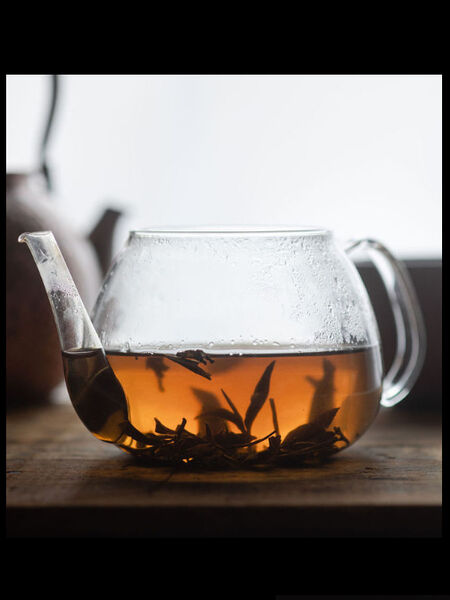What’s In a Name: Tea Name Origins

Have you ever seen a tea name written in another language and wondered what it means in English? Are you curious about the etymology of tea? Would you like a deeper understanding of teas right down to the names? Grab your dictionary and a cup of tea as we look into the name origins of some of Japan’s and China’s most famous teas.
First things first...
The Character for Tea
Many Chinese and Japanese teas include the Kanji or Hanzi (or Chinese character) 茶, which translates to “tea” in both languages and is pronounced “cha” and “chá” in Japanese and Chinese respectively. There are exceptions to the rule, such as Gyokuro or Pi Lo Chun.Now on with the teas!
Sencha
This delicious Japanese green tea is written in Japanese with the Kanji characters 煎茶. The character 煎 or “sen” translates as “infusion” or “infusing”. Combined with “cha”, this tea literally translated to English means “steeped tea”, describing the method used to brew the beverage.Matcha
The popular powdered green tea, Matcha (also spelled as Maccha) is written in Japanese as 抹茶. The character 抹 or “matsu” has a few different meanings, but in this case means “to rub”. Literally translated, Matcha means “rubbed tea”, which describes how matcha is made by rubbing tea leaves into a powder.
Gyokuro
One of Japan’s finest teas, Gyokuro does not contain the character for tea in its name and is written as 玉 露 in Japanese. 玉 or “gyoku” means jewel or precious stone, but is often used to refer to jade. The character 露 or “ro” means “dew”. The name is translated as “Jade Dew” in English and describes the pale green color of a brewed cup of gyokuro.
Kukicha
Kukicha is written two different ways in Japanese: 茎茶 (which is read as Kukicha) and 棒茶 (which is read as Boucha). Both 茎 and 棒 have similar, though not identical meanings: 茎 or “kuki” means stalk or stem, while 棒 or “bou” can mean stick, rod, cane, or pole. Therefore, Kukicha translates to “stalk/stem tea” while Boucha translates to “Stick Tea”. Whichever way to call it, both names refer to the tea being made up of the stems and twigs of the tea bush.
Genmai Cha
Genmai Cha is written with three Kanji characters: 玄米茶. The characters 玄米 or “Genmai” refers brown rice (or unmilled or hulled rice). Going deeper, 玄 or “gen” can be translated as “mysterious” but historically referred to the color black in Chinese. 米 or “mai” is one of the many words meaning “rice” in Japanese. Literally, Genmai Cha means “brown rice tea”, describing the popped rice brewed alongside tea leaves.
Gunpowder Tea
While called “Gunpowder” in English, this popular green tea in Chinese is 珠茶 or “zhū chá”. 珠 or “zhū” means “pearl” or a pearl-like object such as a bead. Literally translated, zhū chá is “Pearl Tea” in English, referring to the pearl-like shape of the dried tea that unfurls during brewing. There are a couple of theories why this tea is called “Gunpowder” in English. Some believe it’s because of the dried tea resemblance to gunpowder pellets or because of its slightly smokey flavor. Another theory is that the Mandarin expression “gāng pào de” or “Freshly brewed” sounds like “Gunpowder” in English.
Bai Hao Yin Zhen
Often called Silver Needle, this white tea is written in Chinese as 白毫银针 or “bái háo yín zhēn”. 白 or “bái” refers to the color white, and 毫 or “háo” means “fine hair”. 银 or “yín” refers to the metal “silver”, and lastly 针 or “zhēn” means “needle” or a needle-like object. The name can be literally translated as “White Hair Silver Needle”, describing the white hairs on the needle-like tea leaves, however many tea stores call it by its shortened name “Silver Needle”.
Golden Monkey
This black tea in Chinese is called jīn hóu chá and written as 金猴茶. 金 or jīn is often translated as “gold” but can be associated with other metals such as copper. 猴 or hóu means “monkey”. Because of the tea’s curved, golden appearance, it is said to resemble monkey paws, hence the name “Golden Monkey”.
Pi Lo Chun
Written as 碧螺春, this tea can be referred to as “Pi Lo Chun” or more accurately as “Bì luó chūn”. 碧 or “bì” is associated with the colors blue and green, sometimes translated as “blue-green” or “green jade”. 螺 or luó can either refer an aquatic snail or a swirl shape. 春 or chūn has a couple of different meanings, but in this case refers to the season Spring. Literally translated, Pi Lo Chun means “green snail spring”, describing the color and shape of the tea leaves (spiral and snail-like) and its Springtime harvest.
This Taiwanese oolong has a couple different names in Chinese. A common name is simply 白毫 or bái háo (“white hair” in English), which you may recognize from the Chinese name for Silver Needle; it’s a shortened form of 白毫烏龍茶 or báiháo wūlóng chá. 烏龍 or wūlóng literally translates to “black dragon”, but more familiarly to tea drinkers means “oolong”. This name is usually translated as “white-tip oolong tea”. Another name for this tea is the origin of the English name “Oriental Beauty” or “Eastern Beauty”: 東方美人茶 or dōngfāng měirén chá. 東 or “dōng” means east and 方 or “fāng” marks direction. 美人 or “měirén” means a beautiful woman.
